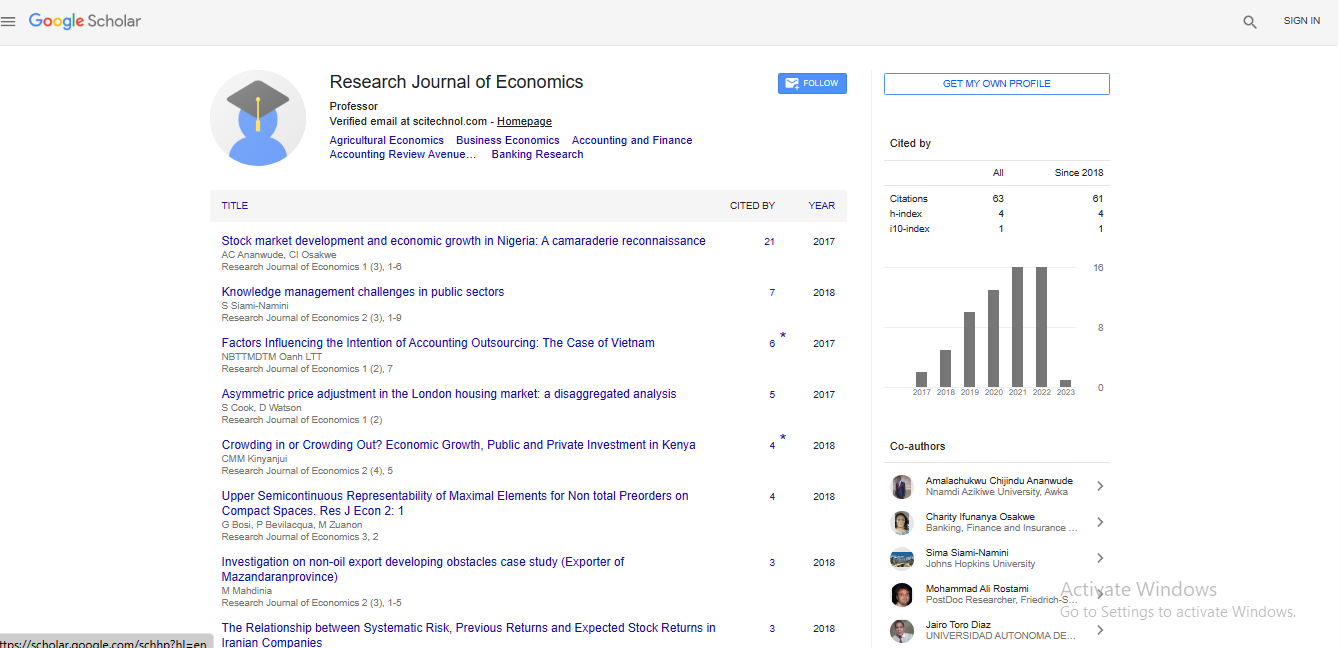Commentary, Res J Econ Vol: 8 Issue: 1
Traditional Stock Exchanges Strategies for Trading Activity
Yishiang Chignwa*
Department of Information Management and Finance, National Yang Ming Chiao Tung University, Hsinchu, Taiwan
- *Corresponding Author:
- Yishiang Chignwa
Department of Information Management and Finance,
National Yang Ming Chiao Tung University,
Hsinchu,
Taiwan;
E-mail: yishiang_chignwa@gmail.com
Received date: 04 November, 2023, Manuscript No. RJE-23-119237;
Editor assigned date: 06 November, 2023, PreQC No. RJE-23-119237 (PQ);
Reviewed date: 20 November, 2023, QC No. RJE-23-119237;
Revised date: 15 July, 2024, Manuscript No. RJE-23-119237 (R);
Published date: 22 July, 2024, DOI: 10.4172/RJE.1000178
Citation: Chignwa Y (2024) Traditional Stock Exchanges Strategies for Trading Activity. Res J Econ 8:1.
Description
An exchange where stockbrokers and traders may purchase and sell securities, such as shares of stock, bonds, and other financial instruments, is known as a stock exchange, securities exchange, or bourse. Additionally, stock exchanges may offer services for the issuance and redemption of these kinds of instruments and securities as well as capital events like dividend and income payments. Bonds, unit trusts, derivatives, pooled investment products, and listed company stocks are among the securities that are exchanged on a stock market. Stock exchanges sometimes operate as "continuous auction" marketplaces, where buyers and sellers complete deals using computerized trading platforms or open outcry at a central location like the exchange floor.
A security has to be listed on a particular stock market in order to be traded there. Typically, records are kept in one central location, but as electronic communication networks are used by modern markets to facilitate faster and less expensive transactions, commerce is becoming less and less dependent on physical locations. Brokers who are exchange members are the only ones allowed to trade on the exchange. Alternative trading platforms, electronic communication networks, and "dark pools" have displaced traditional stock exchanges as the primary hubs for trading activity in recent years.
Only equities that are listed on a reliable stock market are seen to be worth more. Companies that increase the number of their shareholders might profit from their established reputation in the stock exchange market. One effective strategy for growing a company's shareholder base and, consequently, its credibility is to issue shares for sale on the market for existing owners to purchase. An efficient method for a business to obtain inexpensive funding is by offering its shares for sale to shareholders on the stock exchange. Because of their reputation on the stock exchange, listed firms are able to issue shares with a relatively higher level of capital, which they then utilize to fund their operations and maintain their business. The majority of lenders provide lending facilities secured by listed securities and accept them as collateral. Because they are seen as more reliable in the stock exchange market, listed companies are more likely to get their loan requests approved more quickly. Listing gives shareholders immediate marketability and enables them to benefit from liquidity more than other alternatives. It enables shareholders to calculate the estimated worth of the investments they own. It also enables sharing transactions with an organization and lessens the risks involved. Additionally, it aids shareholders in increasing their profits from even a little rise in the total worth of the company.
The securities commissioners of each country have specified the reporting criteria that must be met by any company that wants to go public. Companies in the world are required by the securities and exchange commission to disclose more information and to debate and publish their financial statements. Quarterly and yearly reports are the formats in which these are released. A firm must also meet the standards of the stock exchange it wants to be listed on in order to be listed in addition to these prerequisites. The listing criteria of the three previously mentioned exchanges are exemplified here. Initial Public Offerings (IPOs) may also have different listing criteria.
 Spanish
Spanish  Chinese
Chinese  Russian
Russian  German
German  French
French  Japanese
Japanese  Portuguese
Portuguese  Hindi
Hindi 